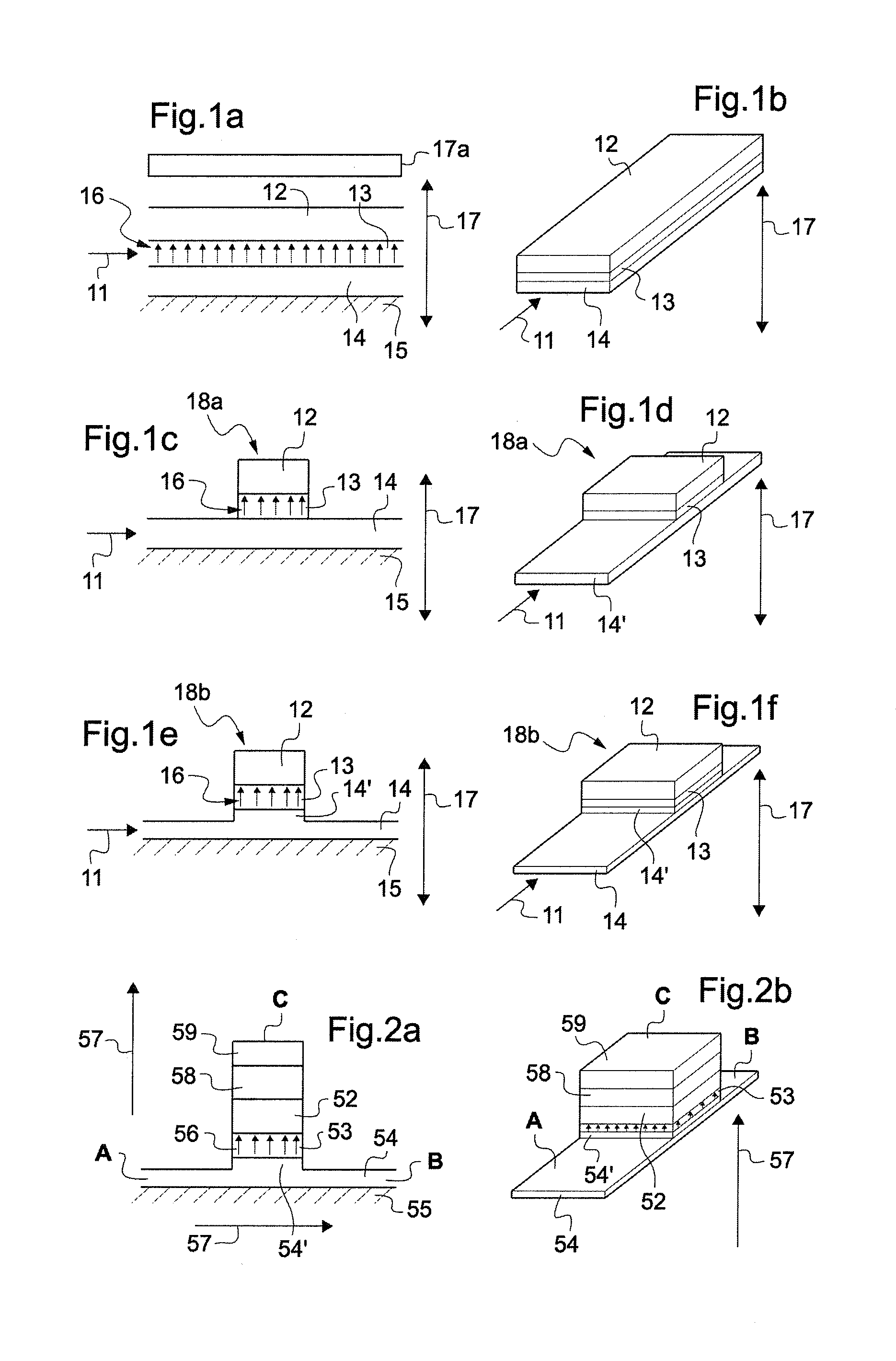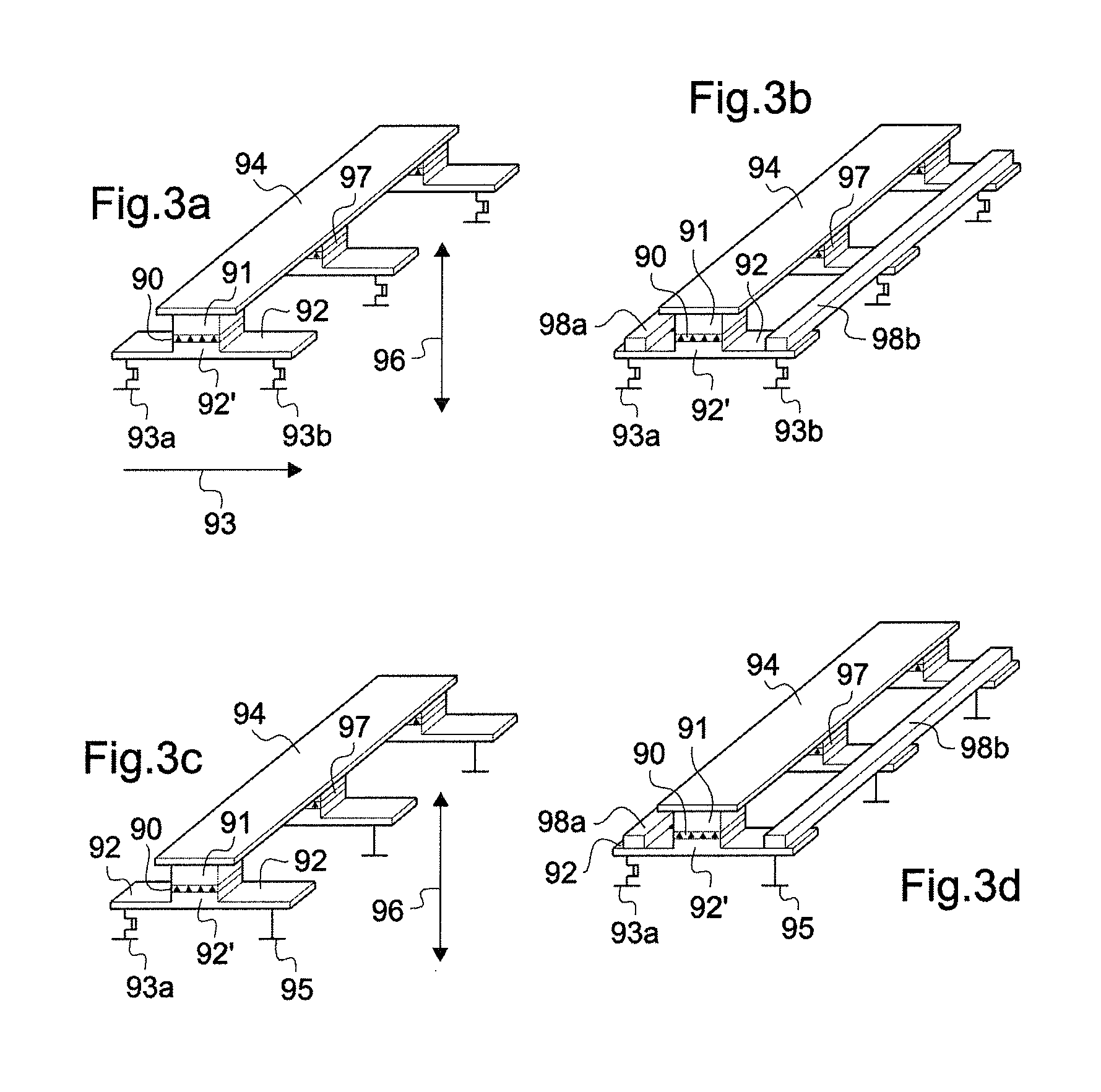Writable magnetic element
a magnetic element and magnetic field technology, applied in the field of magnetic elements, can solve the problems of increasing difficulty, and affecting the effect of magnetic field integration
- Summary
- Abstract
- Description
- Claims
- Application Information
AI Technical Summary
Benefits of technology
Problems solved by technology
Method used
Image
Examples
example
[0053]A stack comprising a 2 nm thick Pt conductive layer 14, a 1 nm thick Co central layer 13, and an AlOX layer 12 presents for a given oxidation state of said AlOX layer magnetization that is perpendicular, whereas if the thickness of the Co layer is equal to 1.5 nm, the magnetization is in the plane. If the stack is subjected to annealing at 300° C. for 60 minutes in a vacuum, then the magnetization of the Co central layer 13 is perpendicular to the plane. At a thickness greater than 3 nm for the Co layer, it is not possible to obtain magnetization outside the plane regardless of the annealing or the oxidation parameters if the layer 12 is made of AlOX. However, if the dielectric used for the layer 12 is MgOX, it is possible to obtain perpendicular magnetization for a thickness of the central layer that is greater than 3 nm.
[0054]The influence of the thickness of a cobalt layer on magnetic properties for different oxides (AlOX, MgOX, SiOX) is described in the article “Domain pat...
PUM
 Login to View More
Login to View More Abstract
Description
Claims
Application Information
 Login to View More
Login to View More - R&D
- Intellectual Property
- Life Sciences
- Materials
- Tech Scout
- Unparalleled Data Quality
- Higher Quality Content
- 60% Fewer Hallucinations
Browse by: Latest US Patents, China's latest patents, Technical Efficacy Thesaurus, Application Domain, Technology Topic, Popular Technical Reports.
© 2025 PatSnap. All rights reserved.Legal|Privacy policy|Modern Slavery Act Transparency Statement|Sitemap|About US| Contact US: help@patsnap.com



